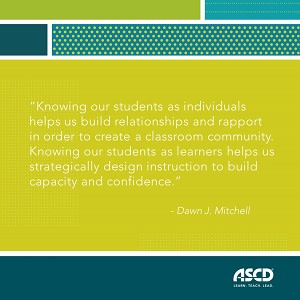7. Engage and Excite
Building, applying, and sharing knowledge with others has a positive effect on reading comprehension.
- In Concept-Oriented Reading Instruction (CORI), children in grades 3 to 5 build knowledge through reading texts about a science topic and engaging in related science investigations. Children share their knowledge by giving presentations or writing books, with positive effects. Use of CORI with 6th and 7th graders of multilingual backgrounds in history education has also been found to be effective (e.g., United States History for Engaged Reading).
- In Project PLACE (Project-Approach to Literacy and Civic Engagement), 2nd-grade students build knowledge by reading and listening to texts about a social studies topic and engaging in experiences such as map-making and interviewing. They then apply and share their knowledge by producing written works for their community, such as fliers, postcards, or letters to local leaders, all with positive effects.
- In the Model of Reading Engagement (MORE), 1st- and 2nd-grade students learn about topics in science or social studies (e.g., animal survival) that are anchored to a schema, which is a way to organize information in the mind. Topics are explored through informational texts that afford multiple exposures to target vocabulary within the conceptual theme, key concepts, and explicit connections to students’ prior knowledge. MORE demonstrated improvement in science knowledge, listening comprehension, argumentative writing, and both short- and long-term reading comprehension.
8. Curriculum Counts
- Organizing instruction to build knowledge logically. Lessons are anchored in science and social studies topics and in which one topic builds upon and connects to the next. Students develop increasingly sophisticated discipline-specific skills, such as planning investigations in science and analyzing and evaluating historical artifacts.
- Using conceptually coherent text sets. Topics are explored through an intentionally assembled set of texts, sequenced to incrementally build knowledge. Texts can span a range of genres and should expose students to repeated and related words and ideas. Conceptually coherent text sets can deepen knowledge and vocabulary across successive readings or read-alouds.
- Engaging children in writing about the knowledge they are building. Many effective approaches, such as those described in the previous section, engage children in using the knowledge they are building to communicate with others in oral and written form. Teaching others about what one has learned often serves to solidify understanding of the content.
Students benefit when a curriculum connects what they are learning to what they already know.
9. Use Texts as Tools
- Informative or explanatory texts, which convey information about the natural and social world.
- Persuasive texts, which often invoke knowledge in service of an argument and can offer compelling opportunities to scrutinize and critique the information conveyed.
- Procedural texts, which provide instructions and tell us how to do something.
- Nonfiction narratives, which can build children’s knowledge of true events and experiences.
- Biography and autobiography, which convey knowledge about a person’s life (and even the historical context and circumstances of that life).
- Literary texts, which are written more to convey experiences than to impart information, can build knowledge as well, such as about human nature, the profession in which a character works, or the historical context in which a character lived.
10. Safeguard Science and Social Studies
Science and social studies have often been crowded out of the K-5 curriculum, especially in places where remediation in reading and math is a priority. This is truly an issue of educational equity.
An Essential Reading List for Literacy Research
Scholars from the Scientific Advisory Committee share freely-accessible articles on knowledge-building and comprehension.

The Knowledge Matters Campaign promotes excellent instructional practices in schools and raises awareness of the importance of content knowledge to reading comprehension and critical thinking. The Campaign receives guidance from a distinguished group of 14 education researchers who constitute the Scientific Advisory Committee. While this group is not formally associated with the Campaign and does not directly endorse—as a group or as individuals—its work, they are committed to advancing educators' understanding of how children learn to read and write.
Marilyn Jager Adams
Visiting Scholar, Brown University
Ana Taboada Barber
Professor and Associate Dean, Research, Innovation and Partnerships, College of Education, University of Maryland
Sonia Cabell
Associate Professor of Education, Florida Center for Reading Research, Florida State University
Hugh Catts
Professor of Communication Science and Disorders, Florida State University
Anne E. Cunningham
Professor, Learning Sciences and Development, Berkeley School of Education, University of California, Berkeley
Nell Duke
Professor of Literacy, Language, and Culture and in combined Program in Education and Psychology, University of Michigan
Lily Wong Fillmore
Professor Emerita, Graduate School of Education, University of California, Berkeley
Claude Goldenberg
Nomellini & Olivier Professor of Education, Emeritus, Graduate School of Education, Stanford University
Danielle McNamara
Professor, Department of Psychology, Arizona State University
Kate Nation
Professor of Experimental Psychology, University of Oxford
Susan Neuman
Professor, Early Childhood and Literacy Development, Steinhardt School of Culture, Education, and Human Development, New York University
Kathleen Rastle
Professor of Cognitive Psychology, Royal Holloway University of London
David Steiner
Executive Director, Johns Hopkins Institute for Education Policy
Daniel Willingham
Professor of Psychology, University of Virginia








